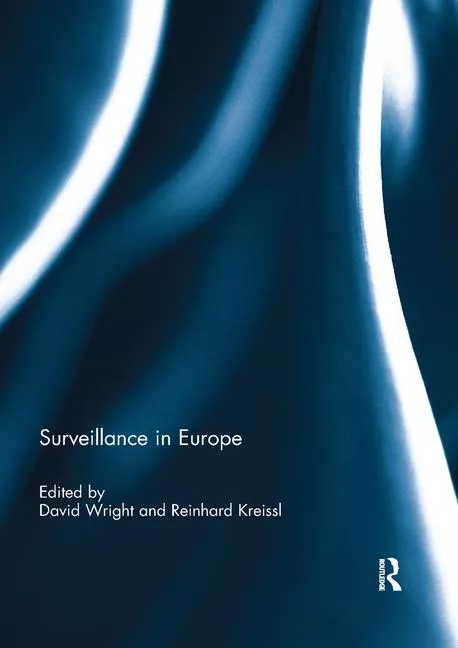Study Analyzes Bomb Threats in Schools

According to the Educator’s School Safety Network (ESSN), a national non-profit school safety organization, the vast majority of media reports related to school safety this school year have been about bomb threats.
ESSN compiled the most current information on bomb incidents in America’s schools to determine the scope and severity of the bomb incident problem.
According to ESSN, the 2015-2016 school year has seen an unprecedented increase in school-related bomb threat incidents both in the United States and throughout the world.
School Safety News data from November 2011 through December of 2014 was used by ESSN researchers to compile a data set consisting of all bomb related incidents occurring at a school during that time period.
According to ESSN, in the 2015-2016 school year U.S. schools have experienced 1,267 bomb threats, an increase of 106% compared to that same time period in 2012-2013.
This is not just a one-time occurrence: since November of 2011 there has been an increase in bomb incidents of 1,461%, the report said.
While this report focuses on United States schools, ESSN data indicates that this is an international phenomena as well, with school-related bomb incidents occurring at an increased rate in virtually every continent in more than 22 different countries this school year alone.
Bomb threats are often incorrectly considered to be more prevalent in the spring as an “end of the year”- type prank. In reality, this is not the case. The number of bomb incidents in schools during September increased 307% from September 2012 to September 2014. October threats increased 144% from 2011 to 2015.
From 2012 to September 2015, the months of April, October, and September had the most bomb threats with an average of 97, 77, and 67 threats respectively. While these months historically had the highest rates of bomb threats, they comprised only a small percentage of threats (April 18%, October 14%, September 13%). Because of the dramatic increase in threats in the spring of 2016, when 2015 - 2016 data is included, April is still the month with the most threats overall (an average 113 per day, 16% of all threats), however May is now second with an average of 92 threats per day and 13% of all threats.
October is third with 84 threats per day on average, comprising 12% of all threats. The rate of bomb incidents is almost equally spread throughout each school month. When examined over time as well as just for the 2015-2016 school year, it appears that bomb threat incidents are a year round concern and occur at a fairly constant rate throughout the school year.
While there is clearly an increase over time in the number of bomb threats in U.S. schools, statistics from this school year alone demonstrate a startling trend. January of 2016 saw 206 school-based bomb incidents, an average of more than 10 threats per school day- the highest number recorded to date. While the rate decreased in March to an overage of 5.7 per day, this may be attributed to a lower number of school days that month due to Easter and/or spring breaks. By May 2016, the rate of bomb threats had risen to 189 incidents, an average of 9 per day.
Prior to the 2015-2016 school year, California and Ohio reported the most bomb threats during the previous three year period. Widespread instances of threats made through automated calling on the east coast in the second half of the school year has altered this dynamic with Massachusetts, New Jersey, and Maryland now experiencing bomb threats much more frequently. Despite this rapid increase, Ohio, California, Florida, and Pennsylvania consistently have ranked in the top positions for bomb threats in schools, not just this school year, but in the longitudinal study as well. At the conclusion of the 2015-2016 school year, Massachusetts had experienced 10.7% of all bomb incidents, followed by Ohio with 7.6%, and New Jersey with 6.8%.
ESSN said there is often an assumption that school bomb incidents occur almost exclusively in a secondary school or higher education environment. This may have been true in the past, however, ESSN data from the 2015-2016 school year indicates a disturbing trend. While more than a third (35%) of bomb incidents occurred in high schools, more incidents effected schools with much younger students – 20% in middle schools and 44% in elementary or primary schools that include preschool children.
When a specific school was targeted for a bomb incident, it was most often a high school, with 61% of targeted threats. While the rate of threats was lower at 18%, both middle and elementary schools were targeted equally.
In a high school or higher education setting, the perpetrator of the event was often found to be a student who desired the disruption and/or notoriety achieved. At the elementary level, the perpetrator was often someone from outside of the organization whose purposes are much more obscured – and potentially much more deadly.
As in the past, during this school year, the ESSN report said that almost half of the bomb threats received were called in to the school itself. There has been much media attention about “swatting”, where an automated call or threat is made via the internet, typically to a significant number of schools at once. An example of this occurred on December 15, 2015 when hundreds of school districts across the United States received automated call threats, resulting in the closure of more than 900 schools in California alone. In just one day, May 23, 2016, there were 68 bomb threats impacting 53 schools in 18 states, more than half of which were elementary buildings.
According to ESSN, "It is sometimes difficult to determine if the call reported was an automated call or an actual person, as this is often not clearly stated by media reports and/or law enforcement officials. When this distinction was clear, it was almost evenly split. Approximately 50.2% of the time the threat was made by an actual person, with automated calling reported about 49.7% of the time. This is a significant increase in the second half of the year, with automated calling reported only 12.9% of the time in the fall of 2015."
While more than 50% of bomb threats were called into the school, 32% of the time the threat came from within the school itself, most typically as a note or written threat. In more than 71% of those cases, the written threat was found in the restroom. Technology was not a significant factor in bomb threats, with only 10% of the threats delivered by email or some form of social media.
ESSn said that the nature of a school’s response to a bomb incident is difficult to quantify because (1) it isn’t always reported, and (2) evacuation can mean a brief evacuation from school, dismissal or cancellation of classes – or both. The terminology to describe response protocols is often not consistent as the terms lockdown (typically used in response to violence actually occurring) and shelter in place (used for chemical or biological threats) are often used interchangeably. In many cases there is a mixed response – an evacuation, a search, then classes are cancelled. The nature and scope of the search isn’t typically reported either.
In general, however, evacuation is the most frequently used option – 79% of the time – and this number is most definitely much higher. One critical consideration in the response of schools is the notion of “user fatigue”. When numerous bomb threats are received by the same organization within a short period of time, as is often the case, ESSN said there is a tendency to discontinue evacuation practices or to become less vigilant in the response procedures themselves.
Looking for a reprint of this article?
From high-res PDFs to custom plaques, order your copy today!






